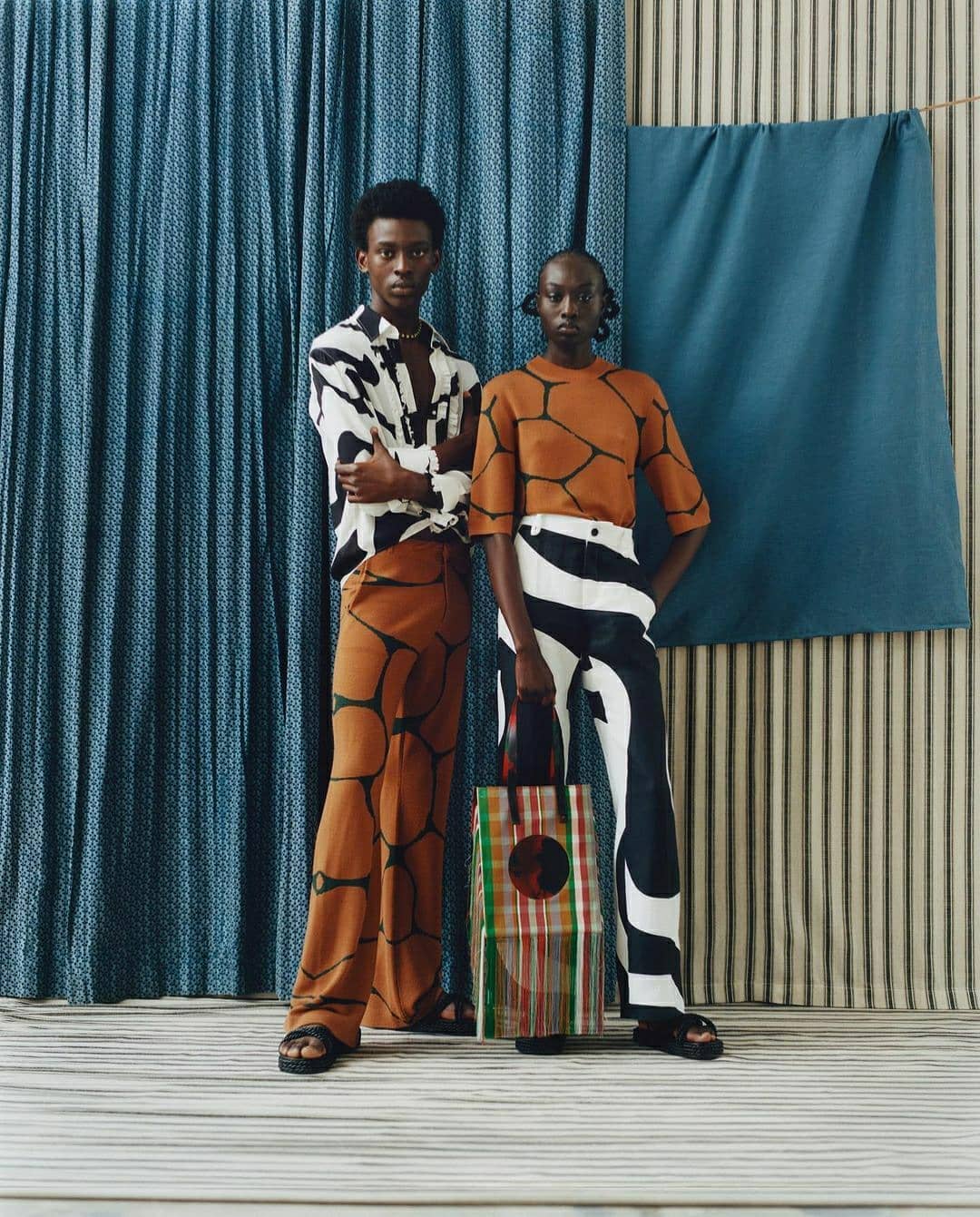
Threads of Power: African Fashion’s Collaborations and Their Lasting Impact
Written by: Maryam Opoola

African fashion has never waited for validation. Long before the runways of Paris or Milan turned their gaze south, designers across the continent were weaving identity, heritage, and innovation into garments that spoke louder than any global endorsement could. What collaborations have done is magnify this brilliance, amplifying African voices on the global stage and forcing the fashion world to acknowledge what has always been there: a beginning of creativity rooted in culture, craft, and unapologetic originality.
Over the past decade, partnerships between African designers and global brands created some of the most transformative moments in fashion. These collaborations showed the world that African fashion is not merely a source of fleeting inspiration but a force with its own authority The partnership between Karl Lagerfeld and Kenneth Ize in 2021 remains one of the most defining collaborations in African fashion’s recent history. Kenneth Ize is not just another designer emerging from Nigeria’s creative scene; he represents a new generation of African visionaries who refuse to separate heritage from innovation. Born in Lagos and educated in Vienna, Ize straddles two worlds, African tradition and European technique and his work reflects that duality. His mission has always been to revive aso-oke, a centuries-old Yoruba handwoven textile, and translate it into contemporary forms that resonate globally.
When he collaborated with the Parisian fashion house, the outcome was not just a collection but a meaningful exchange of ideas. Designed as gender-neutral, the capsule challenged traditional fashion norms. Ize’s bold stripes and textured fabrics, grounded in Yoruba craftsmanship, were integrated into the house’s precise tailoring. The result was a mix of tradition and modernity: blazers detailed with woven colors and accessories that reimagined aso-oke as fringed bags and platform sandals for an international audience.
For Ize, the collaboration was a platform to amplify what he has championed since his early collections that African textiles are not relics of the past but living, evolving art forms. Each piece carried the labor and artistry of Nigerian weavers, many of them women working in small communities, whose hands and techniques were placed on the same pedestal as European couture ateliers. In doing so, the collaboration challenged a long-standing imbalance in fashion’s hierarchy, where Western craft has often been exalted while non-Western traditions have been sidelined.
For the Karl Lagerfeld house, partnering with Ize was a chance to tap into authenticity at a time when fashion audiences crave stories with depth and meaning. It was proof that innovation emerges most powerfully when heritage is not erased but elevated. The capsule signaled that African fashion could no longer be treated as a trend or seasonal inspiration. Instead, it must be recognized as an equal player shaping the global industry’s future.
The impact of this collaboration lingers because it was more than aesthetics, it was an act of cultural recognition. Kenneth Ize brought Yoruba weaving traditions into conversation with European design creating a body of work that was neither assimilation nor appropriation but true collaboration. It validated the idea that African designers do not need to adapt to global fashion’s gaze; rather, global fashion must learn to meet them on their own terms.
Explore More from Kenneth and Karl
Other Labels to Catch Up On



Comments